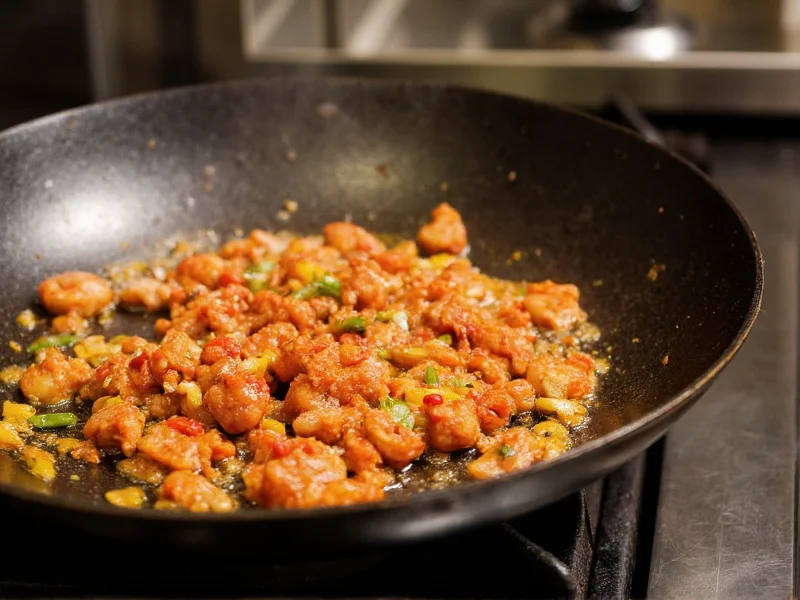Seasoning a wok transforms your cooking experience by creating a chemical bond between oil and metal that forms a slick, protective layer. Unlike non-stick coatings, this natural barrier improves with proper care and becomes more effective over time. The process works through polymerization—when oil reaches its smoke point, its molecules break down and reorganize into a hard, smooth surface bonded to the metal.
Understanding Wok Materials and Seasoning Needs
Not all woks require seasoning. Carbon steel and cast iron models need this treatment, while stainless steel, aluminum, and pre-seasoned non-stick varieties don't. Traditional Chinese carbon steel woks (typically 1-2mm thick) respond best to seasoning due to their porous surface that readily accepts oil polymers. Thicker Western-style carbon steel woks also benefit from proper seasoning but may require more heat application time.
The Science Behind Effective Wok Seasoning
Successful wok seasoning depends on three critical factors: temperature control, oil selection, and surface preparation. The oil must reach its smoke point (typically 350-450°F) to initiate polymerization without burning. High-smoke-point oils with balanced fatty acid composition create the most durable layers. Your wok's surface must be completely clean and dry—any residue prevents proper oil bonding.
| Oil Type | Smoke Point (°F) | Polymerization Quality | Best For |
|---|---|---|---|
| Flaxseed | 225 | ★★★★★ | Initial seasoning layers |
| Grapeseed | 420 | ★★★★☆ | Regular maintenance |
| Canola | 400 | ★★★☆☆ | Everyday cooking |
| Peanut | 450 | ★★★☆☆ | High-heat stir-frying |
| Sunflower | 440 | ★★★☆☆ | Balanced performance |
Step-by-Step Traditional Seasoning Method
Follow this authentic technique for professional results:
- Initial cleaning: Remove factory coating with hot water and steel wool. Never use soap on raw carbon steel.
- Drying: Heat wok over medium flame until completely dry and blueing appears.
- Oil application: Using a paper towel and tongs, apply thin oil layer while rotating wok.
- Polymerization: Heat until smoking, then swirl oil to coat entire surface including sides.
- Cooling: Let wok cool completely before wiping excess oil.
- Repetition: Repeat steps 3-5 three times for initial seasoning.
Avoiding Common Seasoning Mistakes
Many home cooks sabotage their seasoning efforts through these errors:
- Using too much oil: Creates sticky residue instead of smooth patina
- Insufficient heating: Prevents proper polymerization below smoke point
- Washing with soap: Strips the protective layer from carbon steel
- Storing while damp: Causes rust that damages the seasoning
- Using acidic ingredients too soon: Weakens new seasoning layers
Maintenance for Long-Lasting Seasoning
Preserve your wok's performance with these daily practices:
After each use, clean with hot water and a soft brush—never soap. While still warm, apply a micro-thin oil layer using the paper towel method. Store in a dry place with the lid off to prevent moisture buildup. For stubborn food residue, use coarse salt as a natural abrasive. Re-season monthly with high-heat oil treatment if food starts sticking.
Troubleshooting Seasoning Problems
Sticky surface: Indicates excess oil or insufficient heating. Strip with vinegar solution and restart seasoning.
Rust spots: Remove with steel wool, dry thoroughly, and apply immediate oil layer.
Flaking seasoning: Usually from improper initial cleaning. Strip completely and restart process.
Uneven color: Normal in early stages—regular cooking will create uniform patina.
Advanced Seasoning Techniques
For restaurant-quality results, try these professional methods:
The "tea leaf seasoning" technique involves simmering tea leaves in the wok before oil application, creating microscopic texture for better oil adhesion. Some chefs use "onion carbonization"—charring whole onions to deposit natural sugars that enhance polymerization. For cast iron woks, "baking seasoning" in an oven at 450°F creates more uniform heating than stovetop methods.











 浙公网安备
33010002000092号
浙公网安备
33010002000092号 浙B2-20120091-4
浙B2-20120091-4